My Martial Arts Journey
First Experience
My martial arts journey probably started in 1977 at age nine. We had just moved from Madison, a university town and capital of Wisconsin, to Hancock, a small town in the upper peninsula of Michigan. As the only person of color in the school, and an outstanding student, I attracted a lot of attention, not all of it welcome.
To build my confidence against bullies, my mother enrolled me in a karate class at a nearby college. The instructor was a military veteran. The class had been advertised for all ages, and he was happy to take our money, but I was the only one in the class under the age of 18. I remember lessons in jumping and falling, but little else. I was kept separate from the other trainees. I bragged to one bully that I knew karate, but could only cower when he actually called my bluff. The instructor took to calling me “little jamaa,” which, I later suspected, may have been a racial reference. When the quarter was over, the instructor organized a party, but it was in a bar, so I remained out of place.
Tae Kwon Do
The following year, we moved across the canal to Houghton, the home of Michigan Technological University, where my father was a professor. My mother enrolled me in a tae kwon do class taught by Korean college students, brothers named Sam and John An.
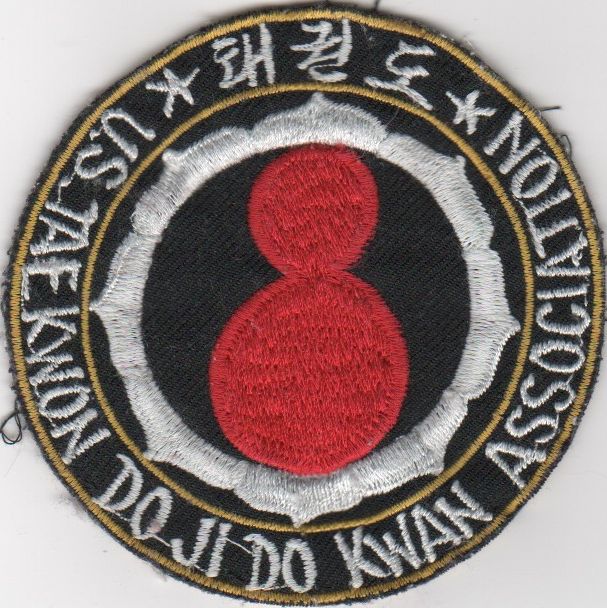
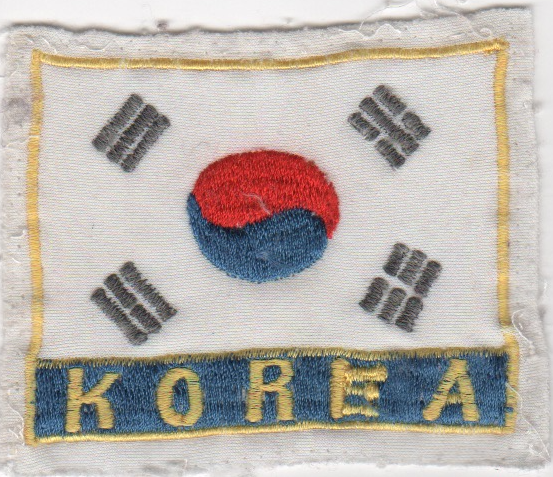
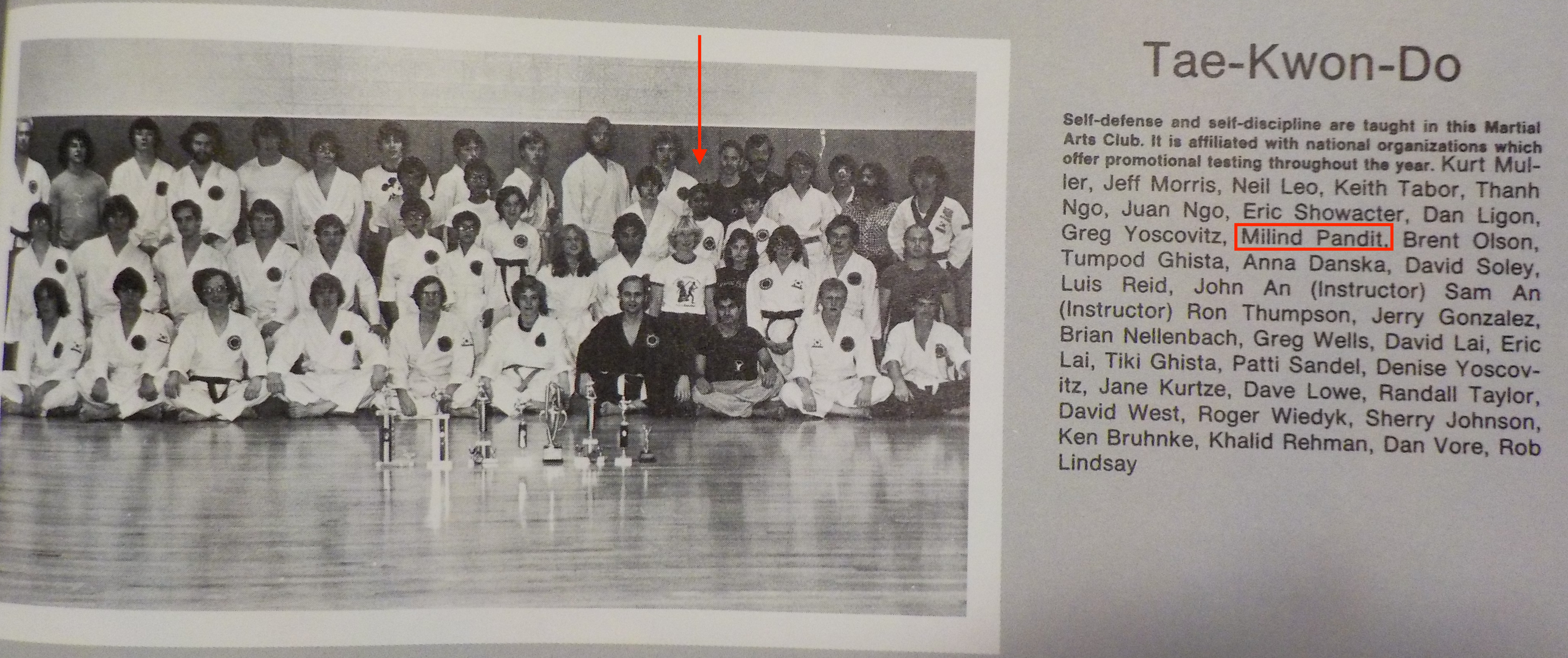
The class held a couple of parties where we watched Bruce Li movies on VHS.
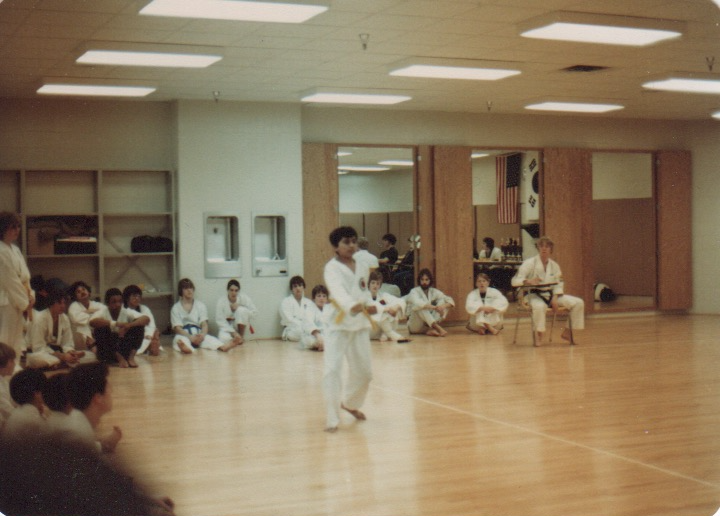
Once, there was a competition between university clubs. I earned a small medal for my form. I was terrified to free spar against strangers, but I won my first bout.
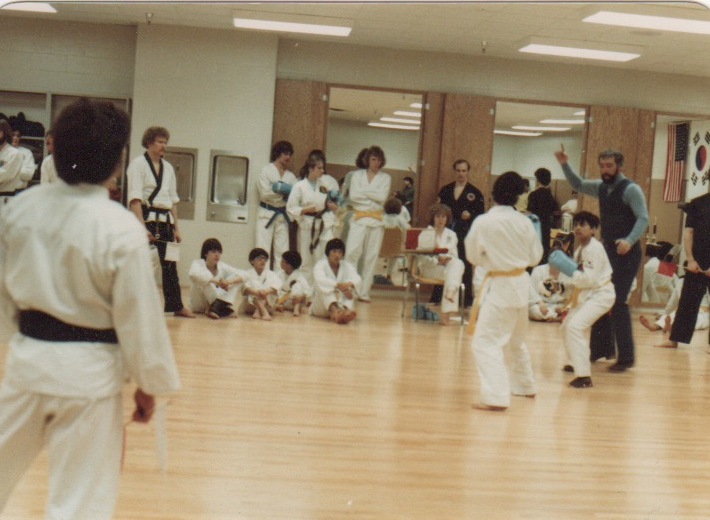
I was defeated in my second bout. The young man who defeated me lost his next bout by default, because he drew blood breaking his opponent’s nose.
My mother thought the uniforms were too expensive to buy, so she made me one at home on the sewing machine. Over a couple of years, I became extremely flexible, able to do side kicks above my own head. My legs became very strong. I progressed to yellow belt, green stripe, green belt and then blue stripe.
In high school, I stopped tae kwon do and took up cross country running and swimming with my classmates. My stamina and leg strength were reasonably good, but I sorely lacked speed. I did well in diving, due to good coordination and balance.
The Karate Kid
I resumed tae kwon do briefly with some buddies in 1984, after The Karate Kid had its blockbuster debut. (I continue to recommend the movie for its surprisingly deep insights into modern martial arts. I certainly saw parallels into my own life, as Ralph Macchio’s character, Daniel, took abuse from bullies and then neglect from his first instructor! The 2010 version is equally good, though it should be called The Kung Fu Kid.) I was somewhat dismayed to find that, due to my break from training, my former peers now outranked me.
A couple of times, the An brothers did something unprecedented: they singled out two trainees, brother and sister, to rest at the peak of the training. The trainees told me it was because their father was a professor, and one of the An brothers was a student in his class. Once, I, too, was singled out to rest at the peak of the training. When I went home, my father laughed that Sam An was taking one of his classes.
For years afterward, I sneered that this was a feeble attempt by the brothers to curry favor, to improve their standing in the university by giving their professors’ children special treatment. In maturity, I came to understand that this must be a standard Korean way for them to show respect to their own professors, as they expected respectful behavior from their trainees. It was respect for the sake of being respectful, not for any payback.
To the An brothers, I am eternally indebted for teaching me the value of strict physical discipline, and for coaching me through pain and exhaustion to athletic achievement.
Staying Fit in the Real World
In college, I discovered that I could quickly put on muscle with a small investment of time in weightlifting. I frequently rode a bicycle for transportation and leisure. I continued weightlifting and cycling when I entered the workforce, frequently commuting on bicycle. In 1998, I joined Gyuszi Suto’s karate class at Intel in Jones Farm. I bought a professionally-made uniform for the first time. We trained on a carpeted floor. However, it was to be a brief return to martial arts, as I left Intel in May of that year. Over the following years, I continued weightlifting and cycling. I was never very fast. Indeed, I was frequently embarrassed to get passed by children or senior citizens, but I did complete ten centuries (100-mile bicycle rides) to raise money for the American Diabetes Association and the American Lung Association.
My body seemed to take a downturn in 2002. Work and travel kept me from staying fit. I gained weight. The doctor informed me that the arches in my feet had fallen, which was causing pain in my knees and even hips. I had developed bunions and the beginnings of painful heel spurs. Custom orthotics relieved all of these problems, but I had to wear them at all times. Over the next decade, my cholesterol and blood pressure also became a cause for concern.
Around 2009 I began getting unreasonably fatigued while driving, so I got my vision checked. At age 42, for the first time in my life, I began wearing glasses for distance vision. A couple of years later, my vision seemed to improve. The optometrist called it a medical miracle, and I went without glasses for a year. Then my vision degraded again.
Karate in Earnest
In February 2012, I returned to Intel as a contractor. This gave me access to one locker room and I took advantage of it to bike to work. Six months later, I became a permanent employee with full access to the fitness center. I dug out my old uniform and white belt and resumed karate. Gyuszi was still there, now tag-teaming with Ritchie Rice. I enjoyed the coaching, the group activity, and the feeling of achievement when I earned a new belt. I no longer had time for cycling. I stopped lifting weights because it seemed to cause growth and tension in the very muscles that needed to remain lean and relaxed for karate.
Soon after resuming karate, I discovered that I no longer needed orthotics. Barefoot training seems to have restored my arches. Today, I am free of pain in my feet and knees, and actually find the orthotics uncomfortable. A couple of years later, I began meditation on a more regular basis and found this seemed to restore my blood pressure to healthy levels. (In the past couple of years, I have found that a vegan diet, even an imperfect one, has improved my cholesterol without medication.)
At about this time, I began experiencing pain in my hips. It was diagnosed as Gluteus Medius Tendinosis. I had kept my legs strong in one direction with cycling. Side kicks and roundhouse kicks were exercising my legs in a different direction that seemed to cause this condition. I coped by keeping my kicks relatively low.
I progressed in rank, not quickly, but steadily. My training was interrupted by work travel and illness. On the day before my first test, I contracted food poisoning, and managed to pass the test on an empty stomach. Once, I felt ready to test but Gyuszi recommended against it at the last minute. Once, I committed the faux pas of testing without attending the day’s seminar. I failed my 3rd (6th kyu) test the first time I took it. In a couple of tests, I only earned a B rank. It was always difficult to know why I passed or failed—there was feedback and room for improvement no matter the result. Sometimes I thought my own performance was affected by, or misperceived due to, the performance of other people testing at the same time or even on the same day.
In the early days, I was overwhelmed by different feedback from different instructors. Sometimes they even seemed to contradict each other. I resolved that if I teach a class, I will tell each trainee to write down one thing to work on for a week, or until they fix it, before focusing on the next.
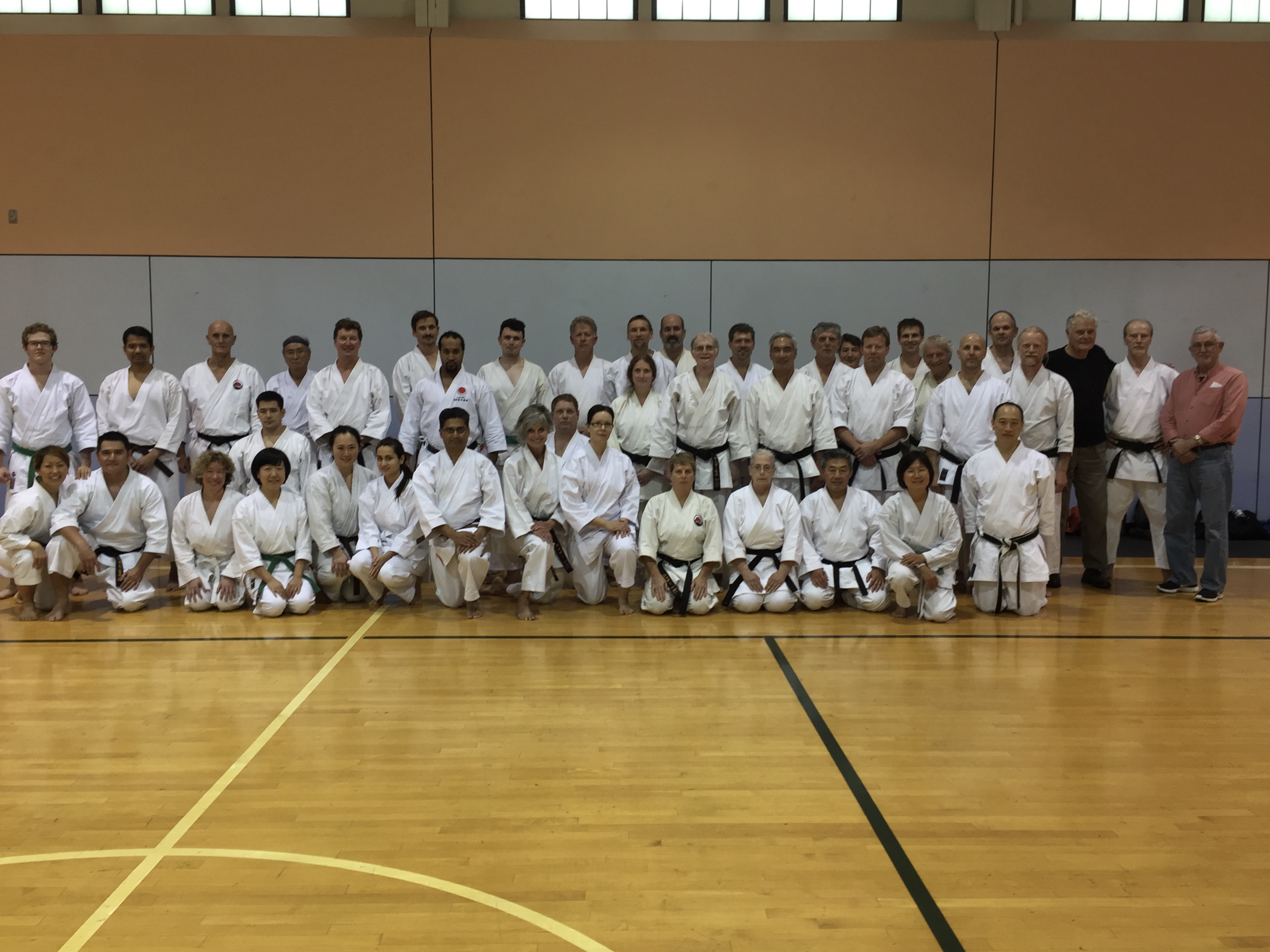
I was initially skeptical about the benefits of attending the quarterly seminars—and getting feedback from even more instructors. However, I discovered that the guest instructors were very inspiring. Frequently, they would teach something in a slightly different way from Gyuszi or Ritchie, with a trick of movement or a helpful drill or with a sensible explanation that helped me do it right. I resolved that if I teach a class, I will avoid repeating myself and strive to teach the same thing in different ways.
On receiving feedback that my stance was too high, I resolved to stand lower than any other trainee at all times until the next test. At Gyuszi’s recommendation, I began pushing heavy doors open with my fist, keeping my elbow close to my body. I ran up the stairs whenever possible, pumping my elbows near my body. A group of friends was meeting weekly to do yoga, and I introduced them to “binoculars,” taking bids from the attendees on the number we would do.
My hip pain grew worse. I went through expensive and painful physical therapy, but it didn’t seem to help. My side and roundhouse kicks grew stronger but stayed low.
Path to Sho Dan
I failed my black belt—1st (sho) dan—test for the first time in 2017, then for the 2nd time in 2018. A series of illnesses kept me from testing again for some time: In September of 2018, I contracted shingles. Through about February 2019 I suffered through a series of upper respiratory infections. In May of 2019, I attended a seminar, but agreed with Gyuszi that I was not sure to pass an examination.
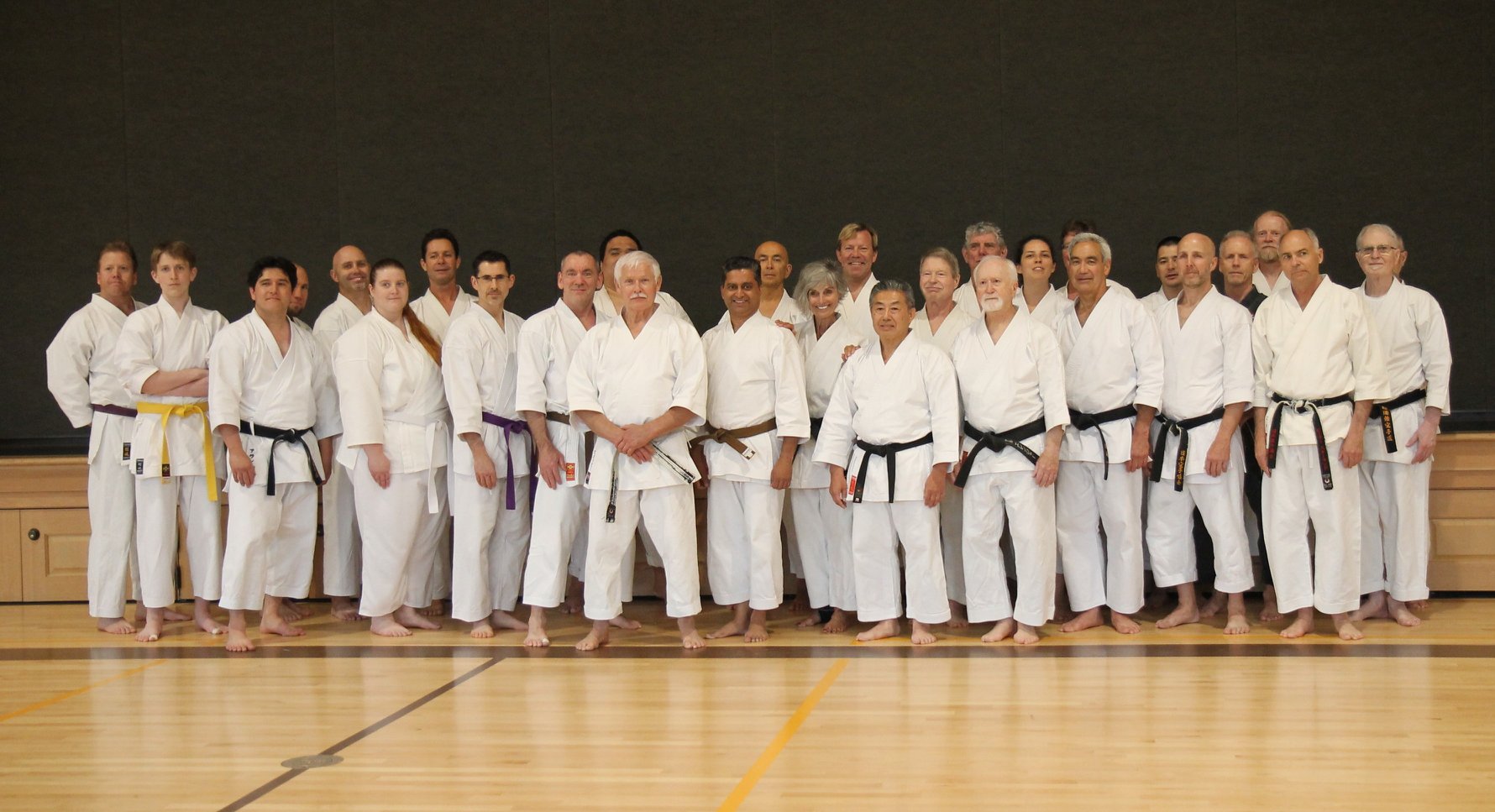
At this point, I began to focus on a few new things:
-
I began taking a daily multivitamin as well as D3. This seemed to result in decreased appetite and increased immune resistance. For the rest of 2019 I remained perfectly healthy.
-
A book written by a professional bodybuilder had long ago impressed upon me the importance of sleep for muscle restoration. A recent episode of Shankar Vedantam’s Hidden Brain podcast reinforced the importance of sleep, especially for men. I began making it a point to take an afternoon nap as well as get a full night’s sleep after karate training. This seemed to let me train more frequently, yet approach each training with fresh energy.
-
At Gyuszi’s persistent urging, I began doing side and roundhouse kicks with ankle weights. I feared this would be very painful for my hips. However, I discovered that if I contracted my external oblique muscles, I could raise the height of my kick significantly, and tilt my pelvis properly, without unduly stressing the Gluteus Medius tendon. Practicing this contraction with increasing ankle weights seemed to build these muscles, and my kicks improved without pain.
In August, I was ready to repeat my test for the third time. I was informed at the last minute that there were insufficient senior instructors to examine me. I was upset and angry, but tried to focus on supporting the other people testing. After all, little would change after passing the test—there would still be feedback and room for improvement!
In September, I was invited to the Bend Karate Club with assurances that there would be senior instructors to examine me. I arrived on Friday afternoon the 20th and enjoyed a late vegan lunch and dinner at Bend restaurants. Afterward, in the empty dojo, I practiced the kata I would be expected to know. I spent the night on a sleeping bag there.
In the morning, I had a vegan breakfast and returned to the dojo. We trained from ten until noon. Testing followed immediately. I felt good during my test, but slightly distracted doing my own enpi kata at the same time another examinee was doing a different one. Examination of our kihon and kumite followed. We both received some feedback and then were told we were done. I went to the bathroom while a third sho dan candidate was being examined. I was very tired, but when I came out of the bathroom, I was told to be his sparring partner. Fortunately, he was as tired as me, so I was able to hold my own against a larger opponent.
Afterward, I waited for the result, barely containing my impatience. The positive result nearly brought me to tears.
On September 21st, 2019, I had reached the most significant milestone of a 42-year journey.
I am deeply grateful to Gyuszi, Ritchie, and John Gierach for their instruction over the last seven years. They have my sincere admiration for the hours, sweat and even blood they have freely given to trainees. Over the years, the senior instructors of the Pacific Northwest Karate Association have inspired me with their astonishing prowess, dedication and kindness: Robert Graves, Jerry Fitzpatrick, Tim Hanlon, Richard Hand, Gil Hartl, and Allan Heaton. I have also benefited greatly from my fellow trainees: Jayapratap Bharathan, Beenish Zia, Srinath Narasimhan, Olaotan Elenitoba-johnson, Lynn Zhang, and Leslie Maksun. On their own journeys, they have been generous with their time and experience to help me along mine. I can only hope to enrich other trainees’ lives the way they have enriched mine.